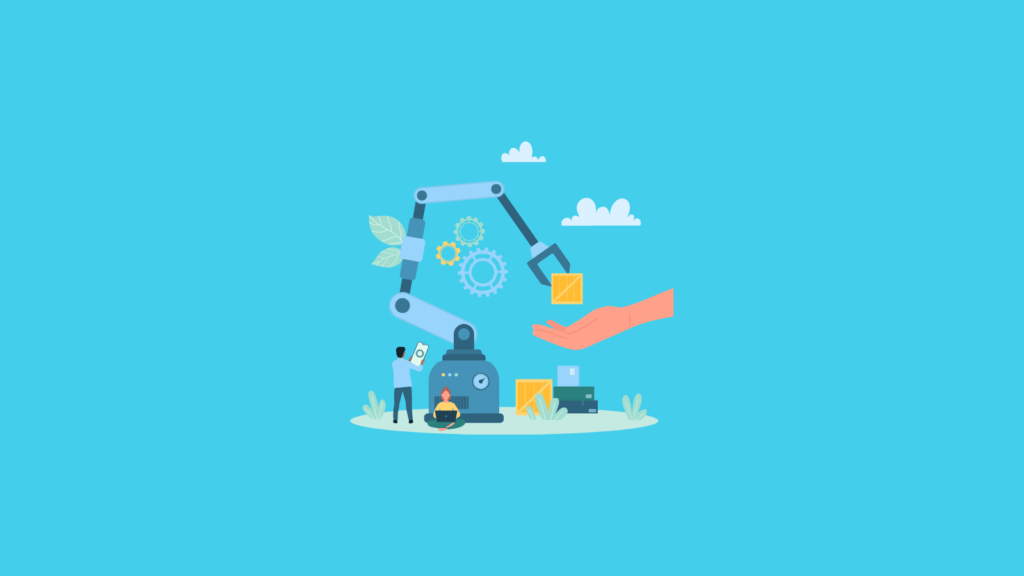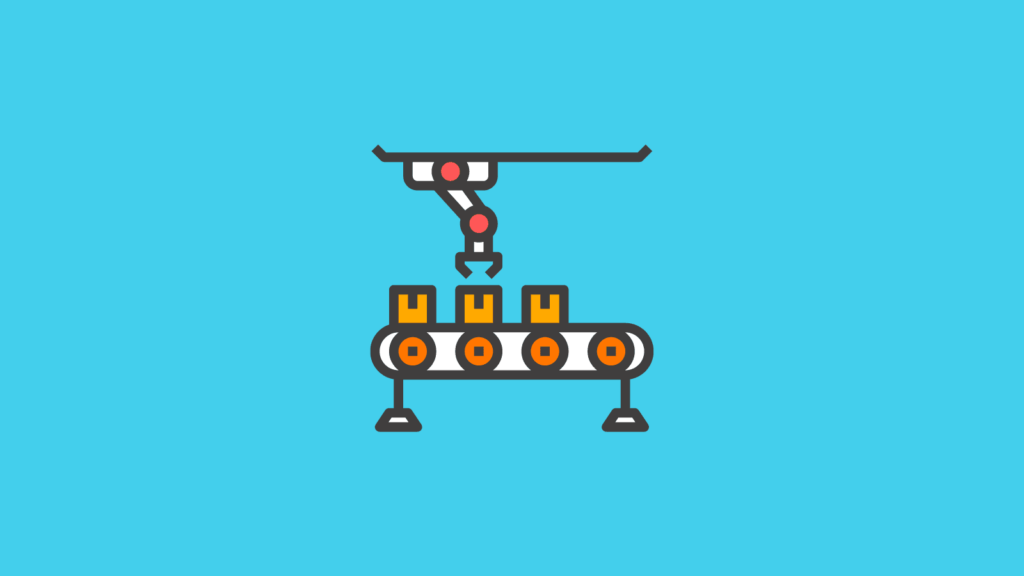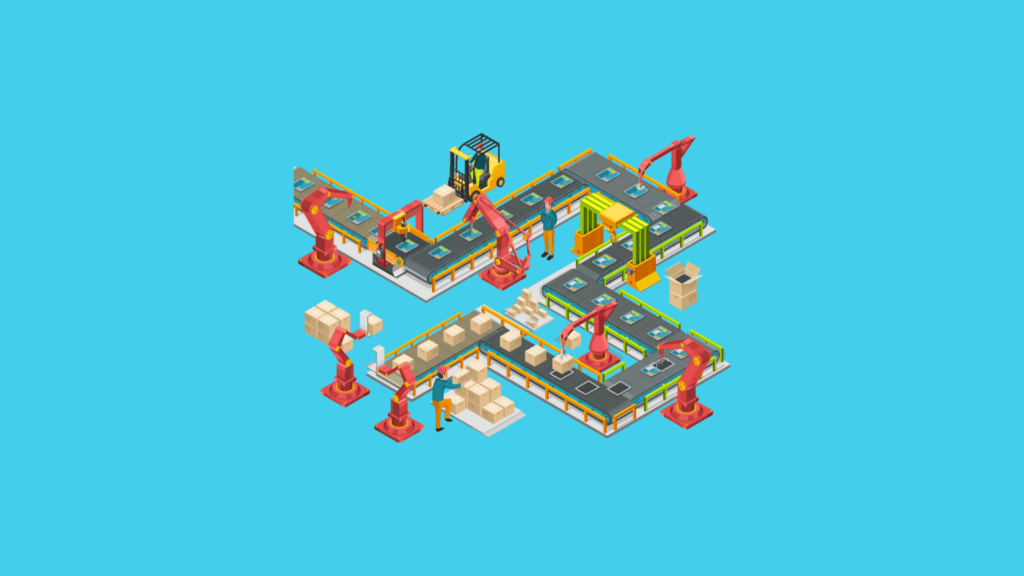Vision Guided Robotics and Warehouse Automation in 2024
Are you looking to automate your warehouse? Check how what Vision Guided Robotics can do for you and how you can get started.

Every company in every industry is looking at automating. Some in small areas and others are looking to make drastic changes.
With the emergence of AI and Tech developments in general, it’s easier than ever before to start automating repetitive tasks. In this article, we’re going to look at how Vision Guided Robotics can help with Warehouse Automation.
Chapters

What Are Vision Guided Robotics
Vision-guided robotics refers to the integration of vision systems or cameras with robotic systems to enable robots to perceive and interpret visual information from their surroundings.
It involves the use of cameras, sensors, and advanced algorithms to capture, process, and analyze visual data, allowing robots to make intelligent decisions and perform tasks based on the information they gather.
Vision-guided robotics combines computer vision, image processing, and robotics to provide robots with visual perception capabilities similar to those of humans. By equipping robots with vision systems, they can accurately sense and understand their environment, detect objects, recognize patterns, determine their position, and make real-time decisions based on visual data.
The applications of vision-guided robotics are diverse and can be found in various industries, including manufacturing, logistics, healthcare, agriculture, and more. Some common applications include robotic pick and place tasks, quality control inspections, assembly line operations, object tracking and manipulation, and autonomous navigation.

The Benefits of Vision Guided Robotics in Warehouse Automation
Vision-guided robotics plays a crucial role in warehouse automation due to several benefits it offers. Here are some reasons why vision-guided robotics is used in warehouse automation:
- Object Detection and Recognition: Vision systems can accurately detect and recognize objects, such as products, packages, and pallets, in a warehouse environment. This enables robots to identify and locate items, improving efficiency in tasks like inventory management, order picking, and sorting.
- Localization and Navigation: Vision-guided robotics helps robots navigate through the warehouse by providing real-time information about their surroundings. By identifying landmarks, markings, or specific objects, robots can determine their position, plan optimal paths, and avoid obstacles, resulting in safer and more efficient operations.
- Pick and Place Operations: Vision systems enable robots to precisely identify and locate objects for picking and placing tasks. By analyzing visual data, robots can determine the position, orientation, and size of objects, allowing them to handle various items with accuracy and efficiency.
- Quality Control and Inspections: Vision-guided robotics can be used to perform quality control checks and inspections on products. By analyzing visual characteristics, robots can detect defects, measure dimensions, and ensure that items meet specified standards, reducing the risk of human error and increasing overall product quality.
- Increased Efficiency and Productivity: Vision-guided robotics enhances warehouse automation by improving overall efficiency and productivity. Robots equipped with vision systems can work continuously, operate at high speeds, and perform tasks with precision and consistency, leading to faster order fulfillment, reduced errors, and increased throughput.
- Flexibility and Adaptability: Vision-guided robots can be easily reprogrammed or trained to handle different objects or tasks in a warehouse. This flexibility allows them to adapt to changing demands, handle various product types, and accommodate dynamic inventory requirements, making them ideal for warehouses with a wide range of products.

Why you Need to Start with Warehouse Automation
Starting with warehouse automation offers several benefits and can be a strategic move for businesses. Here are some reasons why you might consider implementing warehouse automation:
- Increased Efficiency: Warehouse automation can significantly improve operational efficiency by reducing manual labor and streamlining processes. Automated systems can handle tasks such as order picking, sorting, and inventory management more quickly and accurately than human workers, resulting in faster turnaround times and increased productivity.
- Cost Savings: Automating warehouse processes can lead to cost savings in the long run. While the initial investment may be substantial, automated systems can reduce labor costs, minimize errors and product damage, optimize space utilization, and enhance inventory control, ultimately improving the overall cost-effectiveness of warehouse operations.
- Improved Accuracy and Quality Control: Automation reduces the risk of human errors, which can occur in manual tasks like order picking or data entry. Automated systems, such as robotics and barcode scanning, ensure higher accuracy in tasks like inventory tracking, order fulfillment, and quality control inspections, leading to improved customer satisfaction and reduced returns or errors.
- Enhanced Inventory Management: Warehouse automation enables real-time tracking and management of inventory. Automated systems can accurately monitor stock levels, track product movement, and facilitate inventory replenishment, ensuring better inventory control and reducing the risk of stockouts or overstocking.
- Scalability and Adaptability: Automation provides the flexibility to scale operations based on demand fluctuations. As your business grows, automated systems can be easily expanded or adjusted to handle increased volumes, new product lines, or changing customer requirements, allowing for greater agility and responsiveness.
- Safety and Risk Mitigation: Warehouse automation can contribute to a safer working environment by reducing manual handling of heavy objects, minimizing the risk of accidents and injuries. Additionally, automated systems can incorporate safety features such as sensors and alarms to prevent collisions and ensure employee well-being.
- Competitive Advantage: Implementing warehouse automation can give your business a competitive edge in the market. Faster order processing, accurate inventory management, and improved customer satisfaction can differentiate your business from competitors and attract new customers. Automation can also free up human resources to focus on value-added tasks that require creativity, problem-solving, and customer engagement.
While warehouse automation requires careful planning and investment, the long-term benefits can be substantial. By improving efficiency, reducing costs, enhancing accuracy, and enabling scalability, automation sets the stage for optimized warehouse operations, improved customer experiences, and sustained business growth.

How to start Implementing Vision Guided Robotics
To start with vision-guided robotics, here are some steps you can follow:
- Identify Application Areas: Determine the specific tasks or processes in your business where vision-guided robotics can be beneficial. This could include tasks such as pick and place operations, quality control inspections, assembly line operations, or object tracking and manipulation. Understanding your application areas will help you focus on the relevant technologies and requirements.
- Research and Familiarize Yourself: Conduct thorough research to understand the principles, technologies, and components involved in vision-guided robotics. Learn about computer vision, image processing algorithms, cameras, sensors, and robotic systems. Familiarize yourself with industry best practices, case studies, and successful implementations.
- Define Objectives and Requirements: Clearly define your objectives and requirements for implementing vision-guided robotics. Determine what you aim to achieve, such as increased productivity, improved accuracy, or reduced errors. Specify the performance criteria, accuracy levels, speed requirements, and any specific constraints or challenges relevant to your application.
- Evaluate Technology Options: Assess different technology options available for vision-guided robotics. Consider factors such as camera types, image processing software, vision algorithms, and robot integration capabilities. Explore off-the-shelf vision systems or consult with vendors and integrators who specialize in vision-guided robotics to understand the available solutions that align with your requirements.
- Pilot Project: Consider starting with a pilot project to validate the feasibility and benefits of vision-guided robotics in your specific application. Select a specific task or process and implement vision-guided robotics on a small scale. This will allow you to evaluate the technology, fine-tune the parameters, and gather real-world performance data before scaling up.
- System Integration: Once you have selected the appropriate vision system and components, work on integrating them into your existing robotic systems or designing a new system. Ensure proper communication and compatibility between the vision system and the robot controller. Perform thorough testing and validation to ensure seamless integration and reliable performance.
- Training and Optimization: Provide training to your employees or team members involved in operating and maintaining the vision-guided robotics system. Optimize the vision algorithms, camera settings, and calibration procedures to achieve the desired performance. Continuously monitor and evaluate the system to identify areas for improvement and refine the implementation.
- Scale and Expand: If the pilot project proves successful, gradually scale up the implementation of vision-guided robotics to other areas or processes within your business. Consider the scalability and adaptability of the system as you expand, and ensure that you have the necessary resources and support in place to handle the increased implementation.
Remember that implementing vision-guided robotics may require collaboration with experts, such as robotics integrators or vision system providers, to ensure successful implementation. It is crucial to plan and allocate appropriate resources, including time, budget, and expertise, for a smooth transition to vision-guided robotics in your business.

How Vision Guided Robotics are Used in Depalletizing
Let’s look at one possible application for Vision Guided Robotics. Let’s look at Depalletizing Automation.
Here’s a quick video to see what it looks like:
Vision-guided robotics is commonly used in depalletizing processes to automate the task of unloading items from pallets. Here’s how vision-guided robotics are used in depalletizing:
- Pallet Recognition: The vision system captures images of the pallet loaded with products. Using image processing techniques, the vision system identifies the pallet’s position, dimensions, and any distinguishing features to accurately locate and recognize the pallet.
- Object Detection: The vision system analyzes the captured images to detect individual objects or products on the pallet. Advanced algorithms and techniques are used to identify and segment each item, distinguishing them from the background or other objects.
- Localization and Pose Estimation: Once the objects are detected, the vision system determines their position, orientation, and size. This information is crucial for the robot to plan its movements and ensure accurate and efficient picking.
- Path Planning: Based on the information obtained from the vision system, the robotic system plans a trajectory for the robot arm to reach and pick each object on the pallet. Path planning algorithms take into account factors such as collision avoidance, reachability, and overall efficiency.
- Gripper Selection and Control: The appropriate gripper or end-effector is selected based on the nature of the products being depalletized. The robot arm, guided by the vision system, positions the gripper precisely to grasp each object securely without causing damage.
- Pick and Place: The robot arm executes the planned trajectory to pick objects from the pallet. With the aid of the vision system, the robot arm accurately positions itself and grasps the objects using the gripper. It then moves the objects to the desired location, such as a conveyor belt or another storage area.
- Quality Control: As objects are picked from the pallet, the vision system can perform quality control inspections in real-time. It can check for damaged or defective items, ensuring that only acceptable products are moved to the designated location.
- Error Handling: In case of any issues or errors, such as misaligned objects or failed picks, the vision system can provide feedback to the robotic system. This feedback allows the system to adjust its approach and improve the success rate of picking.
By combining vision-guided robotics with depalletizing processes, businesses can achieve increased efficiency, improved accuracy, and reduced labor costs. Vision systems enable robots to accurately identify and handle objects of varying shapes, sizes, and orientations, ensuring a reliable and efficient depalletizing process.
FAQ
What is vision guided robotics?
Vision guided robotics refers to robotic systems that use vision sensors and cameras to interpret their surroundings, allowing them to perform tasks with high precision and adaptability in various environments.
How do vision sensors work in robotic systems?
Vision sensors in robotic systems capture visual data from the environment, which is then processed using algorithms to identify objects, determine their location, and guide the robot’s movements and actions accordingly.
What are the primary applications of vision guided robotics?
Primary applications include manufacturing for tasks like assembly and quality inspection, logistics for sorting and handling products, healthcare for surgical assistance, and autonomous vehicles for navigation.
What are the benefits of using vision guided robotics in industry?
Benefits include increased efficiency and accuracy, greater flexibility in handling different tasks, improved safety, and the ability to work in environments challenging for humans.
How does machine learning enhance the capabilities of vision guided robotics?
Machine learning enhances these capabilities by enabling robots to learn from data, improve their performance over time, recognize patterns, and make decisions in complex and changing environments.
What challenges are associated with implementing vision guided robotics?
Challenges include the high cost of development and integration, the need for advanced programming and maintenance skills, and ensuring reliable performance in varied and dynamic environments.
How do vision guided robots interact with humans in a shared workspace?
In shared workspaces, these robots often use sensors and safety protocols to detect and avoid humans, ensuring safe interaction and collaboration, known as cobotics.
What advancements are currently being made in vision guided robotics?
Advancements include improvements in 3D vision technology, the integration of AI for better decision-making, the development of more sophisticated sensors, and increased adaptability for various applications.
How important is the accuracy of vision systems in robotics?
Accuracy is crucial as it directly impacts the robot’s ability to perform tasks precisely, especially in applications requiring fine detail or where safety is a concern.
What types of industries are most likely to benefit from vision guided robotics?
Industries like automotive manufacturing, electronics, pharmaceuticals, logistics, and agriculture are most likely to benefit due to their need for precision, efficiency, and the ability to perform repetitive or hazardous tasks.
How do vision guided robotics differ from traditional robotics?
Vision guided robotics differ from traditional robotics in their ability to perceive and interpret their environment, allowing for more adaptability and flexibility in tasks, as opposed to traditional robots which typically follow pre-programmed paths and routines.
What role does computer vision play in vision guided robotics?
Computer vision is central to vision guided robotics, as it involves processing and interpreting visual data from cameras or sensors, enabling the robot to identify objects, assess situations, and make informed decisions.
Can vision guided robots be used in precision agriculture?
Yes, vision guided robots can be used in precision agriculture for tasks like crop monitoring, weed control, and harvesting, offering precision and efficiency and reducing the need for manual labor.
What are the safety considerations when implementing vision guided robotics?
Safety considerations include ensuring the robot can detect and avoid obstacles and humans, implementing fail-safes, and adhering to industry-specific safety standards to prevent accidents.
How does the integration of vision guided robotics impact workforce dynamics?
The integration of these robots can lead to changes in workforce dynamics, often requiring new skill sets for operation and maintenance, and can shift human workers from repetitive tasks to more analytical roles.
What advancements in camera technology are driving the development of vision guided robotics?
Advancements in camera technology, such as high-resolution imaging, 3D depth perception, and improved processing capabilities, are enhancing the efficiency and capabilities of vision guided robotics.
How are vision guided robots trained to perform specific tasks?
These robots are trained using a combination of machine learning algorithms, where they are fed data to recognize patterns and objects, and programming for specific tasks and responses in various scenarios.
What are the limitations of vision guided robotics in their current state?
Current limitations include challenges in processing complex visual information in real-time, high costs of implementation, and limitations in operating in unstructured environments.
How do vision guided robotics contribute to Industry 4.0?
They contribute significantly to Industry 4.0 by offering automation solutions that are adaptable, efficient, and capable of intelligent decision-making, aligning with the goals of smart manufacturing and interconnected systems.
Can vision guided robotics be integrated with other technologies like IoT and AI?
Yes, they can be integrated with IoT and AI, allowing for enhanced data collection and analysis, improved decision-making capabilities, and better synchronization with other smart systems within a connected environment.
How do environmental factors affect the performance of vision guided robotics?
Environmental factors like lighting, dust, and vibration can affect performance by impacting the accuracy of visual recognition. Robust systems and adaptive algorithms are needed to ensure consistent performance in varying conditions.
What are the ethical considerations in deploying vision guided robotics?
Ethical considerations include privacy concerns, especially in public spaces where cameras are used, and the potential impact on employment, necessitating a focus on ethical guidelines and workforce retraining programs.
How is 3D vision technology being utilized in vision guided robotics?
3D vision technology is used to provide depth perception, enabling robots to better understand the spatial arrangement of objects, which is crucial for tasks like object recognition, picking, and navigation.
Can vision guided robotics operate effectively in low-light conditions?
Effectiveness in low-light conditions can be challenging; however, advancements in sensor technology and image processing techniques are improving their ability to operate in such environments.
What types of sensors are commonly used in vision guided robotics?
Common sensors include CCD (charge-coupled device) and CMOS (complementary metal-oxide-semiconductor) cameras for image capture, along with LiDAR and infrared sensors for depth sensing and object detection.
How does the implementation of vision guided robotics impact productivity?
Implementation typically leads to increased productivity by automating tasks, improving accuracy, and enabling 24/7 operation, ultimately leading to higher throughput and efficiency.
What are the considerations for data privacy and security in vision guided robotics?
Data privacy and security considerations include ensuring that visual data is securely stored and transmitted, and that it complies with privacy laws and regulations, especially when operating in sensitive areas.
How can vision guided robotics be customized for specific industry needs?
Customization for specific industries involves programming robots with algorithms tailored to particular tasks, using specialized cameras and sensors, and adapting the robot’s design to suit the operational environment.
What is the future potential of vision guided robotics in healthcare?
In healthcare, the future potential includes performing precise surgeries, aiding in patient care and rehabilitation, and automating routine tasks in hospitals, thereby enhancing healthcare delivery.
How are advancements in AI impacting the development of vision guided robotics?
Advancements in AI are significantly impacting development by improving the robots’ ability to learn, adapt, and make decisions, leading to more autonomous and intelligent systems capable of complex tasks.
Improve your Marketing with the Power of AI
See how you can start with AI Marketing and reach your goals faster than ever before. Check out the Tips, Strategies, AI Tools, Masterclass, Courses, and Community. Unleash the true potential of your brand with the help of AI.